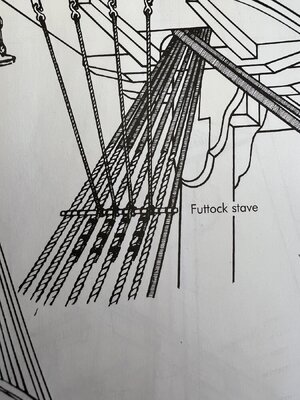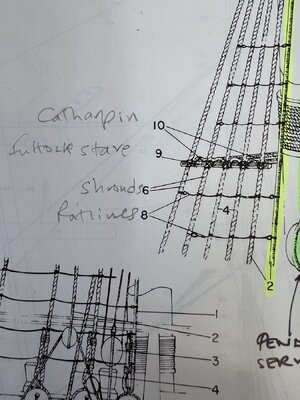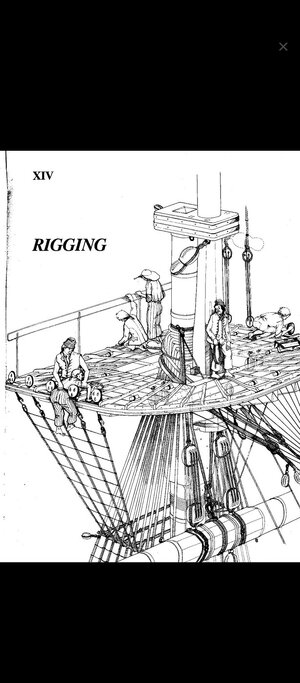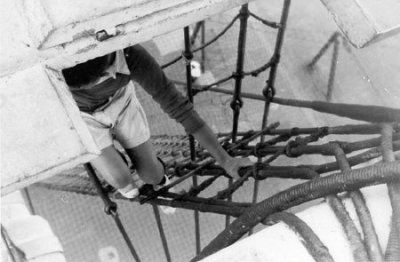Going the normal route, over the outer edge of the top, is less trouble than most people suppose. I have done it often enough in my career, and even though I do really enjoy heights, I found the process easy to learn. The main things that worry neophytes are not being able to see where you are going, so you have to get that first handhold above the rim of the top without being able to see it, and the awkward sense of leaning back and out. Beginners often freeze at that point, until they learn to trust their grip and arm strength.
Going through the lubber's hole is not exactly a cakewalk by comparison. To get to it, the climber has to go around the futtock shrouds in a very cluttered space. If the ship is rigged with catharpins, those help. The space under the top, between the futtock shrouds and the main shrouds, is a little claustrophobic. Going over the edge of the top is much simpler, faster, and once you get the hang of it, more secure. As the bosun on Kalmar Nyckel often reminds new climbers, never let go with both hands at once!
Fred

 I’m getting confused as to whether ratlines on the shrouds continue pass the point where the futttock shrouds meet the main shrouds. Some images show no ratlines at this point. Some images show ratlines continue pass this point and also continue on the futtock shrouds.
I’m getting confused as to whether ratlines on the shrouds continue pass the point where the futttock shrouds meet the main shrouds. Some images show no ratlines at this point. Some images show ratlines continue pass this point and also continue on the futtock shrouds. 







